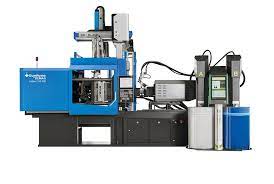Americans generate more than 33 million tons of plastic annually. And plastics are top of mind as a commodity accepted by the municipal infrastructure, along with paper and certain metals. But the EPA’s most recent report places the plastics recovery rate at 9%. Why does so little plastic find its way back into the system?
As I’ve mentioned before, a cause of low plastics collection and capture is consumer confusion. An unintentionally consumer-facing coding system, the SPI’s Resin Identification Code was introduced in 1988 for recycling centers to help with the sorting infrastructure and plastic waste collection rates. Used to identify the plastic resin used in a manufactured item, the RIC uses symbols that happen to look a lot like the universal recycling symbol, confusing many people to think that because an article has a plastic item number, it’s recyclable, which is often not the case.
Consumers who want to contribute to the circular economy of recycling are often stymied just past the capture phase. Types of plastic accepted at most community recycling programs vary greatly, and the instructions delineating what is and is not recyclable in a municipality are often inconsistent. For example, the term “plastic bottle” refers to an item that is ubiquitously understood to be recyclable. But in terms of accepted waste, food and beverage plastics, such as soda bottles, are different than household plastics, like cleaning sprays and their trigger heads.
Program language when referring to recyclables (polymers, specifically) can lead well-intentioned people who recycle to place unaccepted plastic waste into the blue bin—and this causes problems on all fronts. Complicating this issue further for both the consumer and the collection agency are products and packaging comprised of mixed plastic resins and other materials. Collection, sorting and processing of these waste streams are expensive enough to drive down the value of recycled end-product, which is usually not high enough to offset the logistic and processing costs of recycling.
To properly recycle or dispose of such items, consumers must identify alternative recycling programs for the post-consumer waste. Thanks to our corporate sponsors, my company TerraCycle is able to administrate specialized recycling programs for common plastic items that are not accepted by the current infrastructure. For example, most pet food bags, many of which are entirely made up of plastic, fall into this category. Wellness Natural Pet Food, a brand demonstrating a commitment to sustainability through its sourcing and production initiatives, is taking responsibility for its plastics packaging with the Wellness Pet Food Recycling Program.
Comprised of a flexible, “multi-layer film,” the specific composition of the bags is a combination of several different plastics, #4 LDPE (low-density polyethylene) being a majority component. There are also quantities of #5 PP (polypropylene) and #1 PET (polyethylene terephthalate), depending on the bag. Consumers might mistakenly assume that Wellness Pet Food bags, along with other #4 plastics (such as grocery and shopping bags, food storage bags and other pet food bags), belong in the plastics recycling bin. And because the bags are thin, “flexible” plastic, others might think they belong in the trash. In either scenario, the plastic does not add to our plastics recovery numbers, nor does it become a commodifiable resource. Through the Wellness recycling program, the plastic is captured and processed for use in new, innovative products.
Closing the gap between plastics generation and materials recovery starts with educating consumers. In partnership with Pivot TV, Recycle Across America has created Recycle Right, a standardized labeling system for recycling bins that clearly communicates the type of waste accepted for each bin, making it easier for individuals, businesses and communities to improve recycling levels. By providing tips and a best-practices toolkit, the program primes itself for success with simple instructions that empower and inform.
Recycling rates are on the rise, but there is still much to be done about creating a comprehensive system of understanding for consumers to recycle properly and knowledgeably. Educating consumers about recycling techniques and creating awareness of municipal guidelines is needed to increase the effectiveness of community recycling efforts, as well as the overall plastics recovery rate.
Website:www.packagingdigest.com







